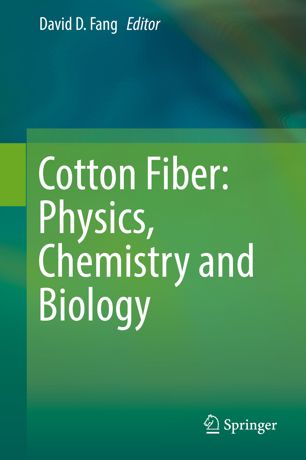

Most ebook files are in PDF format, so you can easily read them using various software such as Foxit Reader or directly on the Google Chrome browser.
Some ebook files are released by publishers in other formats such as .awz, .mobi, .epub, .fb2, etc. You may need to install specific software to read these formats on mobile/PC, such as Calibre.
Please read the tutorial at this link: https://ebookbell.com/faq
We offer FREE conversion to the popular formats you request; however, this may take some time. Therefore, right after payment, please email us, and we will try to provide the service as quickly as possible.
For some exceptional file formats or broken links (if any), please refrain from opening any disputes. Instead, email us first, and we will try to assist within a maximum of 6 hours.
EbookBell Team

4.3
18 reviewsCotton fiber is the most important natural fiber used in the textile industry. The physical structure and chemical compositions of cotton fibers have been extensively studied. Newer high speed spinning instruments are being deployed around the world that demand longer, stronger and finer fibers. Consequently, genetic improvement in fiber quality has been stressed. With improvement in fiber quality has come the realization that further fiber improvement will require a better understanding of fiber development and biology. As a consequence, cotton fiber developmental biology, genetics and genomics have become focal points in the cotton research community. As the longest single-celled plant hair, cotton fiber has been used as an experiment model to study trichome initiation and elongation in plants. This book provides a comprehensive update on cotton fiber physics, chemistry and biology that form the three sections of the book. In the physics section, the physical structure of cotton fiber is first illustrated in great detail. Then a suite of fiber properties and their measuring methods are described. The pros and cons of each method are outlined. New methods to measure physical properties of single fiber and young developing fibers are included. In the chemistry section, the chemical compositions of cotton fibers are described in detail. This knowledge is necessary for efficient modification of cotton fibers for better and broader utilization. The advancement in cotton fiber modification using chemical and enzymatic methods opened new ways to utilize cotton fibers. In the biology section, the book first introduces the utilization of naturally occurring color cottons. Color cottons possess unique attributes such as better fire retardant ability. Advancement in understanding fiber color genetics and biochemical pathways and new utilization of color cottons are discussed. Recent technological advancements in molecular biology and genomics have enabled us to study fiber development in great depth. Many genes and quantitative trait loci related to fiber quality attributes have been identified and genetically mapped. Some of these genes and QTLs are being used in breeding. Progresses in cotton fiber improvement using breeding and biotechnology are discussed in the last chapter. This book serves as a reference for researchers, students, processors, and regulators who either conduct research in cotton fiber improvement or utilize cotton fibers.